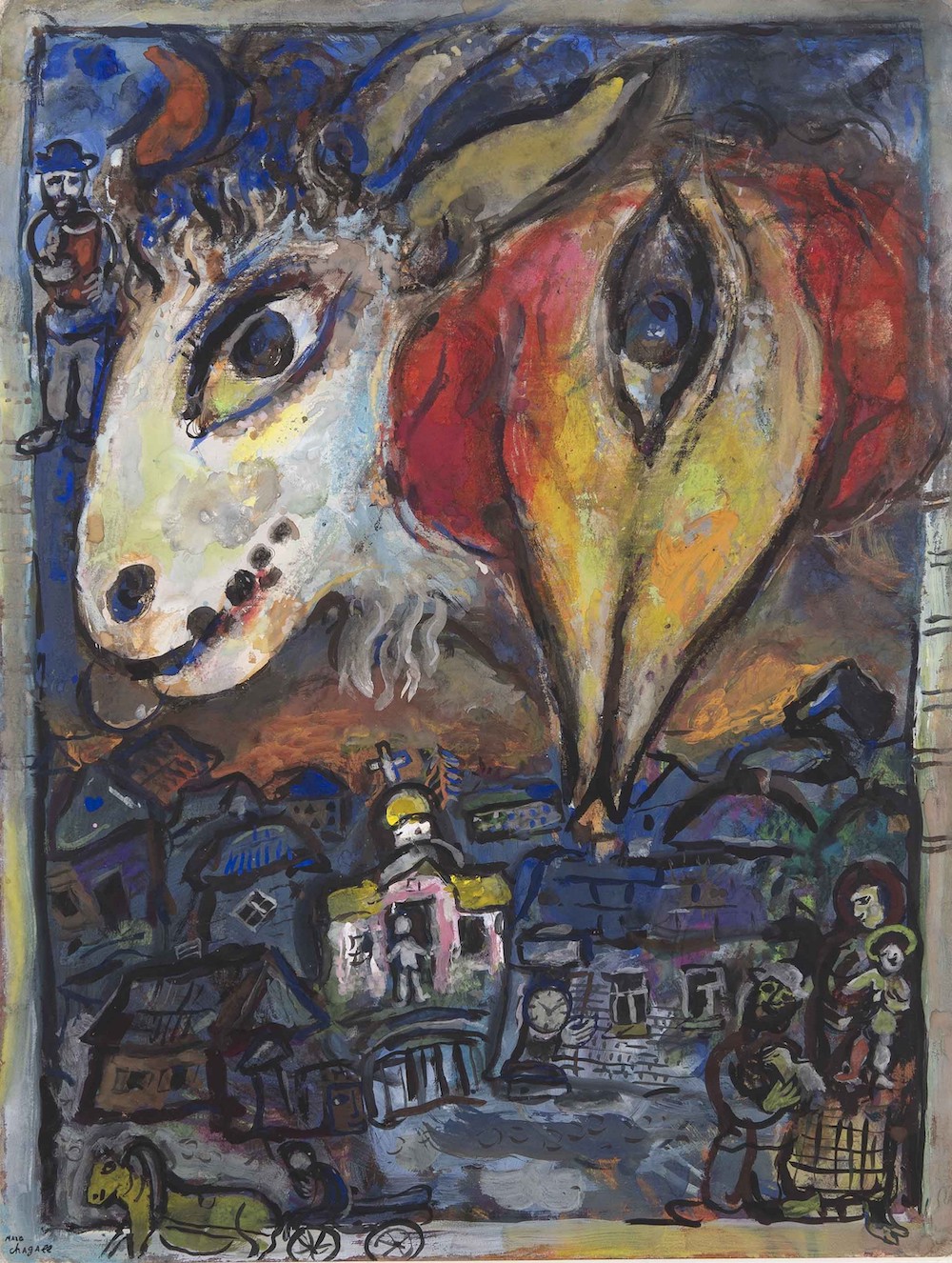Marc Chagall: Love and Luminosity | Alon Zakaim Fine Art
As its name suggests, this impressive exhibition is about light, the light created by one of the twentieth century’s most luminous artists. The thing about light though is that it also casts dark shadows, and Chagall - a jew born in, then exiled from, Russia - lived through some of the 20th century’s very darkest. It’s a testament to the artist’s skill that his paintings so unerringly balance intense light and darkness, love and hate, the colourful and the sombre.
About those colours! Chagall was at the forefront of the modernist revolution in Paris, his home following exile from his native Vitebsk, and inherited from his peers a sense that colours aren’t just what we see, but what we feel, too. Alon Zakaim’s space is deliberately dim, and the paintings are spotlit, so their emotionally resonant colours pop all the more. Picasso’s famous quote, that aside from Matisse Chagall was the only painter left “who understands what colour is” made total sense to me, looking through the windows before entering.
While a modernist, Chagall never quite let go of figuration. Among the flowers and figures he loved to paint is one recurring landscape: his hometown. Vitebsk is the background for the most striking painting on show this time: La fuite: coq et bouc au dessus du village, from 1962 and pictured below, a dramatic reimagining of the artist’s exile and of general destruction and hopelessness, too.

Vitebsk was nearly levelled by the Nazis in 1943. Chagall heard the news in New York, and must have felt unbearably far away. Two decades later his subconscious was still worrying at the scene: we see it in the painting’s tottering buildings, roofs lit up in blue under an acrid, fiery sky. The canvas is bordered by a downtrodden family, a horse and cart, a bearded man clutching his belongings: people, fleeing - fleeing like Chagall did.
The shadows are dark, but the artist can’t help but let some light in: the Orthodox church with its roof lit up in gold blazes in the skyline, and even more dramatically, a fire-coloured cockerel and goat crowd out the sky itself, looming above city and escapees alike. According to the show notes, both animals held symbolic meaning to the artist. The goat is the animal of jewish sacrifices, or darker still, of jews in peril. But the cockerel symbolises resilience - and the artist himself. Death and life; hatred and love; shadow and light.
Since being painted, and being taken into a private collection, the painting has been exhibited now and then: at the big Chagall retrospective at the Grand Palais in 2003, and more recently in Japan. It’s for sale again now, and while most of the works in the Alon Zakaim show were listed at around half a million dollars, this one is POA-only. I’d say it’s priceless.
Marc Chagall: Love and Luminosity is at Alon Zakaim Fine Art (London). 09 October 2023 - 16 February 2024